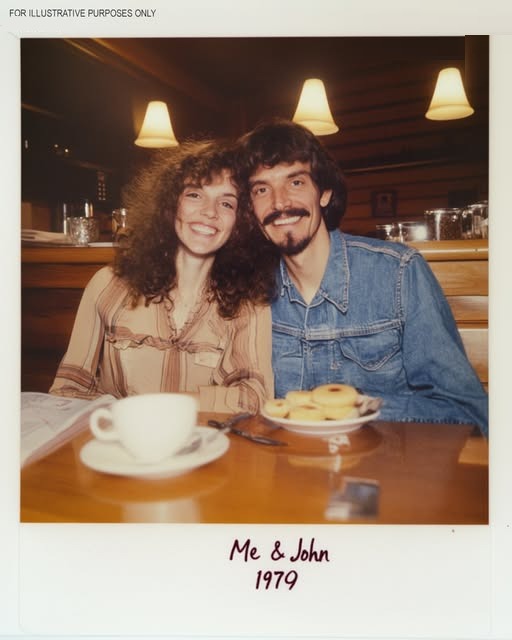I. Dreams, Plans, and a Carefully Charted Future
Ever since I was young, I have prided myself on my ability to plan every detail of my life with precision. Unlike many of my peers who would allow their thoughts to wander into the realms of whimsical fantasies—envisioning fairy-tale weddings and spontaneous, serendipitous romances—I found solace in the rigor of a meticulously constructed five-year plan. In my mind, every aspiration was carefully mapped out, leaving no room for surprises.
By the time I celebrated my 30th birthday, I had already achieved remarkable milestones. I had ascended to the position of senior marketing director at a flourishing tech firm, secured a condo through months of diligent saving and budgeting, and crafted a lifestyle that echoed independence, security, and an unwavering determination to overcome any obstacle. My trajectory was clear—I was the architect of my own destiny.
Then came Liam. Our first encounter unfolded like an intriguing twist in a well-scripted plan. It was at a charity auction—a night when I expected to blend into the crowd of polished donors, losing myself in the routine of dignified charity. Instead, fate intervened. As I navigated the festivities, Liam, in a most unexpected manner, collided with me. In that split second, champagne spilled onto my dress—a minor accident with major repercussions. But what began as an accident soon turned into a spark; rather than apologizing profusely, Liam responded with a sincere laugh and promptly offered his jacket. That spontaneous act of genuine kindness set in motion a partnership that would ultimately force me to reexamine the future I had so carefully planned.
Liam was different from anyone I had known. Unlike the transient crushes and casual encounters that had dotted my past, he remembered the smallest details of our brief initial meeting, displaying a level of attentiveness and tenderness that I had rarely witnessed. Whether he was sending a warm lunch to my office on particularly grueling days or gently urging me to pause when I was overwhelmed, every gesture conveyed a sincerity that slowly dismantled my controlled, predetermined narrative. When, after eighteen months of consistent connection, he proposed by sliding a vintage diamond ring onto my finger—his eyes brimming with heartfelt sincerity—I knew that what I had found was far more than a mere partner. It was the person with whom I had long secretly envisioned sharing not just love, but every moment of my intricately mapped-out life.
Liam had a way of making the future seem not rigidly planned, but beautifully fluid. One memorable night, as we stood together beneath a sky lit by hopeful stars, he whispered, “Eventually, my family will love you,” and then added with a gentle smile, “especially Nana Margot.” His words carried an unexpected mixture of promise and tradition, hinting at the hidden layers of his family history. Nana Margot was a name that resonated with both reverence and an enigmatic allure—a figure who embodied the legacy of his family.
Despite having met many of Liam’s relatives over festive gatherings and intimate family reunions—the warm smiles of his parents, the camaraderie of his sister and brother-in-law, even the shared laughter among distant cousins—Nana Margot had remained an elusive presence. Liam often spoke of her with a quiet, wistful fondness, describing her as the family oracle, the keeper of cherished traditions. According to him, her blessing was indispensable, an essential ingredient that would complete the union between us. When he mentioned that she longed to meet me before our wedding, a blend of honor and anxiety stirred within me.
For a woman who had every detail of her own future planned to perfection, the prospect of meeting Nana Margot was both an opportunity and a challenge. I resolved to prepare as if this would be a defining moment of my future, a conversation that could set the tone for everything that lay ahead. I spent hours—three, to be exact—attentively crafting every detail of my appearance and demeanor. I baked an apple pie using a secret family recipe passed down through Liam’s kin, arranged a bouquet of seasonal flowers that evoked the warmth of autumn, and chose to wear my mother’s cherished pearl earrings. Each act was a symbolic bridge, connecting my orderly vision of the future with the uncharted traditions of Liam’s heritage.
II. Setting Out: The Journey to OKD Gardens
That pivotal day arrived with a mix of emotions—excitement intermingled with trepidation. With a sense of urgency, I left work early, a rarity that underscored the significance of the impending meeting. The car ride to OKD Gardens, the assisted living facility where Nana Margot was said to reside, was an unexpected journey of self-reflection. With the apple pie securely nestled in a box in the passenger seat and the carefully chosen bouquet cradled in my arms, I drove along winding roads framed by autumnal trees. Their leaves, painted in shades of gold, amber, and crimson, danced in the cool breeze, lending an almost surreal beauty to the journey.
As I maneuvered through these quieter roads, memories of my childhood began to surface—memories of long days spent imagining what it would be like to meet a wise mentor or a cherished elder who could impart secrets of life and family. These recollections mingled with my current reality—a successful, independent woman stepping into a tradition steeped in history and mystery. With each passing mile, I rehearsed potential questions and answers in my head. I wondered, “Will she ask about my career? Will she challenge my aspirations?” My thoughts were a blend of rehearsed responses and genuine curiosity, as I prepared not only to introduce myself to a family matriarch but also to potentially have my entire future reframed by her expectations.
Upon arriving at OKD Gardens, I was pleasantly surprised. Rather than the sterile, impersonal environment I had feared, the facility exuded an air of quiet elegance. Marble floors gleamed under the soft lighting, original artworks graced the walls, and fresh, artfully arranged bouquets adorned every corner of the lobby. It was a place that, while modern, resonated with the weight and dignity of long-held traditions. I checked in at the front desk, signing the visitor log with a carefully penned signature that felt almost like a vow. The receptionist’s warm smile and courteous directions—“Third floor, Room 312”—provided a brief but soothing sense of reassurance as I stepped into the elevator, each floor bringing me incrementally closer to an encounter that would challenge the very foundation of my meticulously planned life.
III. The Unsettling Elevator Ride and the Nurse’s Warning
The elevator ride from the lobby to the third floor was a period of quiet anxiety—a time when every second seemed stretched and heavy with anticipation. With each stop, my thoughts raced, intermingling hope with a growing sense of foreboding. What if other fiancées, like me, had been here before and had received a secret warning? What if the legacy I was about to encounter bore untold challenges? I tried to ignore the pit of dread forming in my stomach, telling myself that this was simply another step toward the future I had so eagerly envisioned.
Upon the elevator’s arrival at the third floor, I stepped out into a corridor bathed in soft, ambient light. The walls, painted in a soothing beige hue, were adorned with tasteful artwork that seemed to whisper stories of bygone eras. Following the directional signs, I navigated the passage until I found the polished wooden door of Room 312. My heart pounded as I paused, gathering the courage to knock lightly. After a few seconds, a crisp, authoritative voice called out, “Enter.”
Inside, the room was transformed. Rather than a sterile, clinical environment, it resembled a cozy and carefully preserved apartment. A small sitting area, complete with a plush loveseat, provided an inviting space near a window that allowed soft daylight to filter in. A kitchenette occupied one corner, and across the room, a modest sleeping area hinted at a life steeped in both comfort and tradition. The walls were lined with framed family photographs—images of smiling faces, generations of love and legacy captured in delicate color and black-and-white contrasts. A gentle, calming scent of lavender mixed with a hint of furniture polish enveloped the room, creating an atmosphere that was both lived-in and dignified.
There, in an armchair by the window, sat Nana Margot. Despite her diminutive size, her presence was commanding. Her silver hair was arranged with timeless elegance, and her eyes, both sharp and kind, regarded me with a measured intensity that sent unexpected shivers down my spine.
“Welcome,” she said, her tone firm but not unkind. “I hear you’re Penelope.”
I offered a tentative smile, replying, “Yes, I’m Penelope. It’s truly lovely to finally meet you. Liam has spoken so highly of you.”
In a manner that left no room for casual pleasantries, she accepted the gifts—the bouquet and the pie—with an inscrutable expression and then motioned for me to take a seat. “Let’s talk,” she instructed, her voice carrying the weight of tradition and expectations that seemed both daunting and immutable.
IV. The Meeting with Nana Margot: An Encounter with Tradition
For what felt like an eternity, Nana Margot and I exchanged formal pleasantries—each word measured and deliberate as if reciting a well-rehearsed script. Initially, she showed interest in learning about my career; her inquiry, “I hear you’re a senior director at VTX Solutions. That’s impressive,” was a simple acknowledgment of the professional realm I had so carefully built. However, soon the conversation took a turn into more probing territory, as she began to outline, in no uncertain terms, the family traditions and expectations that governed her world.
Her questions became surprisingly direct, reminiscent of rigid edicts from an era long past. “Permanent Marriage is a must,” she intoned matter-of-factly. “In this family, divorce is not an option. Our bonds are unbreakable.” With that, she shifted the conversation, asserting an even greater sacrifice: “When children arrive, they must be raised by their mothers. It is a non-negotiable expectation that a woman shall bear the primary responsibility of nurturing the family, in keeping with our time-honored traditions.”
Then came the statements about legacy and inheritance. “Certain heirlooms and assets—those that have been preserved over generations—will be passed down only to those who honor our traditions. A male heir, above all, holds a privileged position in our family’s succession.” Her words echoed in the quiet room, each clause laden with the significance of centuries-old customs. Privacy was the final condition she imposed: “Family affairs are to remain private. Personal matters are not for public discourse, nor should they be shared on social media.”
To hear these edicts was both surreal and jarring. The list of conditions felt less like an open conversation and more like a decree from a bygone era—a testament to a legacy that demanded absolute conformity and unwavering sacrifice. For someone who had meticulously carved out every step of her future, these conditions presented a crossroads: Would I suppress the very essence of who I was to assimilate into this rigid framework? The answer was far from straightforward.
As I sat in that room, absorbing every word and grappling with the reality of Nana Margot’s expectations, I could not help but recall the hushed warning from a nurse later that day. “Don’t believe a word. You’re not the first,” she had murmured. That cryptic statement, spoken in secrecy, now reverberated in my mind. Was this meeting simply another test—one imposed on every fiancée who dared to challenge the long-held traditions of Liam’s family? The answer, I feared, might come at a steep personal cost.
V. Whispers of Doubt: Reflections and the Nurse’s Caution
After the meeting, I left Room 312 with a heavy heart. The conditions laid out by Nana Margot were as unyielding as they were alarming, and the memory of the nurse’s whispered warning persisted like an ominous refrain. As I stepped back into the softened light of the corridor outside, the words “You’re not the first” echoed in my mind—an unsettling reminder that countless other women might have faced a similar fate.
That evening, I found myself alone, seated on the balcony of my hotel room, gazing out at the city skyline as its countless lights shimmered against the dusk. In those quiet moments, my thoughts spiraled into a torrent of self-doubt and reflection. How many before me had been similarly ensnared by these overbearing expectations? What price had they paid for trying to belong, and what sacrifices had they ultimately been forced to make? I felt an increasing urgency to understand—not only the legacy of Nana Margot but also the true nature of the demands placed upon me.
Unable to shake the disquiet, I reached out to Liam as night deepened. The phone call was brief, filled with hesitant silences and half-spoken confessions. “Liam, tell me,” I pleaded softly, “is this really what it means to join your family? Am I supposed to give up my career, my identity, everything I’ve worked so hard to build?” The pause on the other end of the line was interminable, every second laden with the weight of unsaid truths. Finally, he whispered, “Penelope, Nana has always been… old-fashioned. It’s part of our family tradition. I never intended for you to feel hurt.” But his words did little to ease the deep-seated conflict raging within me.
That night, the nurse’s warning returned to the forefront of my consciousness—a subtle yet piercing reminder that I was navigating a treacherous path trodden by many before me. It was a warning not to take these traditions at face value, to question the seemingly unchangeable edicts that could very well strip away the very essence of who I was. And as I lay awake in the silence of my hotel room, I resolved that I would no longer allow another person—even a family I aspired to join—to dictate the course of my life.
VI. The Next Day: Seeking Clarity Over Coffee and Quiet Reflection
The following morning, I sought refuge in the comfort of a quaint café near my condo—a familiar sanctuary where I could gather my scattered thoughts. With a warm cup of herbal tea steaming before me and my journal open on the table, I began to document my inner turmoil. Each page became a canvas for my emotions—the shock of Nana Margot’s rigid expectations, the haunting echo of the nurse’s counsel, and the realization that I had been forced to weigh my own desires against an overwhelming tide of tradition.
I delved into online forums and blogs, reading stories of other women who had faced similar challenges. The more I read, the clearer it became that my struggle was not isolated. Many fiancées, across varying cultural and familial backgrounds, had been confronted with nearly identical conditions—demands to suppress personal ambition, the expectation of abandoning professional dreams, and the insistence that love must be defined by absolute sacrifice. One particularly resonant comment read, “Our time and our dreams are as valuable as any family heirloom—we should never have to give them up on the altar of tradition.” That statement struck a deep chord within me, slowly igniting a defiant resolve to stand by my individuality.
I spent hours scribbling reflections in my journal, the act of writing serving as both catharsis and a declaration of independence. With each carefully chosen word, I began to forge an inner promise: I would not allow archaic traditions to dictate my future. My career, my independence, and my dreams were not negotiable assets to be surrendered at the whims of an outdated script. Instead, they were the very foundation upon which I had built my self-worth—a self that deserved respect and acknowledgment in both love and life.
In that quiet café, amidst the soft murmur of conversation and the rich aroma of freshly brewed coffee, I found the strength to confront the harsh realities of the upcoming challenge. The journey ahead was uncertain, and the path forward would require both courage and resilience. But one truth had crystallized in my mind: I had worked too hard and sacrificed too much to relinquish the essence of who I was.
VII. Seeking Guidance: A Quiet Consultation with Nurse Ramirez
Later that day, driven by a need for additional clarity, I returned to OKD Gardens—not to confront Nana Margot again, but to seek out Nurse Ramirez. I had remembered her cryptic warning from the previous day and hoped that her perspective, informed by years of experience with families and fiancées, might help me navigate the maze of expectations.
I found Nurse Ramirez at the nurses’ station, diligently immersed in patient files. When she recognized me, her expression softened with a quiet understanding. “Are you Penelope?” she inquired gently. I nodded, and she led me into a secluded break room where we could speak without the interruptions and prying eyes of the facility.
In that intimate, hushed space, Nurse Ramirez shared what she had observed over the years. “I’ve seen countless fiancées come through these halls,” she said, her voice low and compassionate. “Each one carries a spark of hope, only to leave with their spirit subdued by the demands of tradition. Nana Margot’s words are not simply old-fashioned—they are a test. They are designed to determine how much you are willing to sacrifice for a legacy that may, in truth, be nothing more than a performance.”
Her words struck me with both sorrow and determination. “So what am I to do?” I asked, my voice trembling with uncertainty. “How can I protect the person I am, the life I’ve built, while facing these expectations?”
“Trust in your own value, Penelope,” Nurse Ramirez replied firmly. “Remember, your achievements and the life you’ve created are not negotiable. Do not let anyone—no matter how revered—diminish the fire that burns within you. This test is not a measure of your worth; it is a measure of how much you are willing to compromise your individuality. And you must never compromise who you are.”
Her counsel, delivered with such sincere urgency, resonated deeply within me. It became clear that the legacy I was being asked to join was not built solely on love or tradition, but on the silent surrender of one’s dreams. I thanked her, leaving the break room with a newfound resolve to hold on to my identity—whatever the cost.
VIII. Confronting Expectations: A Candid Dialogue with Liam
That very evening, as twilight deepened and bathed the city in soft hues of purple and gold, I reached out to Liam once more. My heart pounded as I dialed his number, knowing that the conversation ahead would test the limits of our relationship. I needed to understand the full extent of what I was being asked to sacrifice and whether Liam himself truly comprehended the heavy cost of adhering to his family’s traditions.
“Liam, we need to talk about last night,” I began hesitantly when he answered. His voice was gentle but laced with uncertainty—a prelude to a conversation I feared would be fraught with tension. I recounted in measured tones everything that had transpired: the formal meeting with Nana Margot, the list of uncompromising conditions—permanent marriage, complete relinquishment of my career should I have children, and the demand for complete discretion regarding family affairs.
As I spoke, my voice wavered with the enormity of the situation. “Liam, do you really believe this is how our future must be shaped? That I must give up everything that defines me just to join your family?” I asked, the vulnerability in my tone unmistakable.
A long silence followed—a silence that stretched, filled with unspoken regrets and the gravity of tradition. Finally, he confessed, “Penelope, I wish you could see that these are simply the way things have been in my family for generations. It isn’t intended to hurt you—it’s just who they are. I know it’s difficult, and I’m torn myself between my love for you and these expectations that have always been a part of our history.”
“Old-fashioned is hardly an excuse,” I replied, my words filled with a mix of frustration and sorrow. “You’re asking me to sacrifice my identity, my career, the very essence of who I am. I came into this relationship with dreams and ambitions, not with conditions that leave me nothing but compromise.”
The phone line fell silent for a moment that felt like an eternity, and then he murmured, “I love you, Penelope. I never wanted you to feel like you had to change who you are. But this is the reality of my family—a reality I’m afraid I can’t change overnight.” My heart ached as I absorbed his words, realizing that while our love was genuine, it was now tangled in the complexities of familial expectations. I whispered, “I need to be true to myself. I cannot lose myself in a legacy that demands I give up everything I stand for.”
That conversation left me with more questions than answers. How could love coexist with such stark compromises? And was it possible to bridge the gap between the modern, dynamic self I had built and the rigid, unyielding traditions of a family steeped in history?









